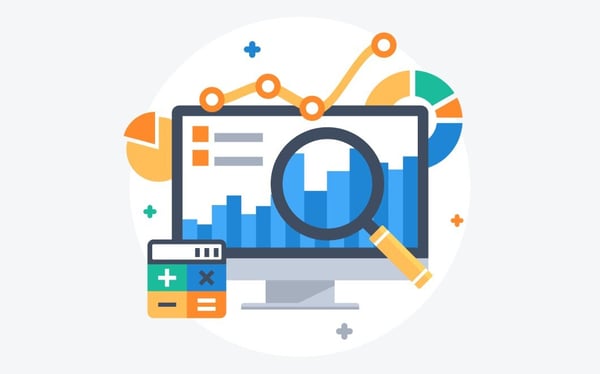The End of Delayed Documentation
How NEMSIS v3.5.0 Can Propel the EMS Industry Forward
New National Data Reporting Elements for Improving Patient Care and Driving Evidence-based Progress in EMS’ Role in the Healthcare Ecosystem Quality assurance (QA) and continuous quality improvement (CQI) don’t stop at the completion of a patient care report (PCR) — that’s just the beginning
Was this information valuable?

New National Data Reporting Elements for Improving Patient Care and Driving Evidence-based Progress in EMS’ Role in the Healthcare Ecosystem
Quality assurance (QA) and continuous quality improvement (CQI) don’t stop at the completion of a patient care report (PCR) — that’s just the beginning. Data is gold, and two national data elements recently added to the NEMSIS v3.5.0 data dictionary will prompt consistent tracking and promote positive clinical changes in the EMS industry.

Recent upgrades to the National Emergency Medical Services Information System (NEMSIS) data dictionary have resulted in additions, subtractions, and standstills to various mandatory, required, recommended, and optional data entry points. All told, there are 643 reported data elements in the NEMSIS v3.5.0 data dictionary. The changes (planned for broad market availability in August 2021) are spread across patient care record (PCR), demographic/agency, state, and national data elements. There are fewer national elements compared to v3.4.0 (155, down from 165). [1] Why is this important?
To the average clinician, data “going in and coming out” isn’t necessarily at the top of their daily priorities. For QA/CQI specialists, medical directors, and other data-minded clinicians, however, NEMSIS-driven reporting changes represent opportunities for progress (that is, if your PCR platform is set up to comply with the new reporting version). Of note, two of the additions to the v3.5.0 stand out: medication administration route and reporting last known well times. Both clinical data elements can help to improve clinical care by capturing essential details that could have implications for treatment decisions.
Medication Administration Route and Expanded Responder Scope
It’s safe to say that we’ve moved past the subcutaneous versus intramuscular debate for epinephrine in anaphylaxis (intramuscular is the winner!). We've now moved on to the efficacy of rapid, intranasal medication administration (versus intravenous administration), particularly for patient comfort, seizure control, and narcotic overdose treatment. While both administration routes are commonly within state paramedic scope of practice, there may be expanded scope of practice to which intranasal administration applies. In addition, its impact on the door-to-intervention timeline demands more data collection and analysis.
Intranasal naloxone (Narcan) has taken the EMS industry by storm and turned a once paramedic-scope only medication into an emergency medical responder scope (and even civilian-scope) medication. Considering the added ability for fentanyl, ketamine, midazolam, and a few other medications to be administered via intranasal route, EMS professionals like Advanced EMT (AEMT) can potentially add them to their available pharmacologic toolbox. I’m not necessarily advocating for such agencies to start seeking DEA approval just yet. After all, we simply don’t have the data to support administration of medications at this provider level. That’s where the new v3.5.0 national reporting data elements come in and can lead us to data-driven decisions on expanded scope in support of quality patient care.
NEMSIS 3.5.0 could eventually supply the data needed for a large, long-term analysis of door-to-midazolam (intranasal administration) outcomes for seizure patient during EMS care and through hospital admission. Could this analysis lay the foundation for an expanded scope of practice for administration by multiple levels of EMS clinicians? We simply don’t know the answer today, but future data – coupled with QA/CQI - could help us see the way forward.

Last Known Well and Stroke Door-to-intervention Time
We’ve made good progress with driving response time metrics, even if we haven't yet agreed on how to differentiate “good” from “appropriate” times just yet. A related response time metric that has been in the spotlight over the past few years is the stroke patient’s door-to-intervention. This metric captures the patient’s last known well time.
Last known well time often refers to patients from within the context of stroke assessment. Its aim is to: 1) pinpoint a symptom/illness onset time in unwitnessed cases; or, 2) pinpoint symptom onset time in witnessed cases. In either situation, the documented time at which the patient’s treatment clock officially starts represents a window of opportunity for EMS treatment that deserves more attention from our industry.
By adding last known well time as a national data element, we can facilitate more robust research on witnessed and unwitnessed stroke incidents, rather than relying on common SAMPLE/OPQRST data elements of previous NEMSIS versions. Patient transport destinations, mobile stroke unit field utilization and response, and potential tPA administration in the prehospital environment are all based on the patient’s last known well time.
What many EMS field clinicians don’t fully understand is how many eyes view their PCRs after the patient is transferred to hospital care providers or how important consistent PCR data entry and tracking is to the overall care continuum. Complete, quality PCR data also contributes to research that validates the drive to progressing evidence-based, EMS clinical practices. As such, last known well time is a great addition to the national dataset and one area that many researchers will be monitoring, especially as HL7/health information exchange (HIE) grows at state and national levels.
Evidence-based Progress as an Industry
“If it wasn’t documented, then it didn’t happen!”
We’ve all heard that phrase before; it’s all about the evidence. Whether it’s at a local or national level, our progress as an industry will be propelled by data. After the primary objective of improving patient care, building a body of evidence is the goal of embracing new data elements in the NEMSIS v3.5.0 update. While the two elements discussed here may not seem like much, especially when considering the many other changes in the v3.5.0 update, they represent an opportunity for us to make a strong, positive impact as an industry on clinical care and EMS operations. Consistency and accuracy are keys to producing reliable data that can be analyzed to drive better decision making. There’s no such thing as bad data or good data, but there is something called complete and accurate data. Capturing more precise data on medication administration and last known well time are clear examples of how we can utilize NEMSIS v3.5.0 to improve individual patient care and outcomes, as well as to build evidence in support of advancing the clinical scope of our profession within the healthcare ecosystem.
Read More on ET3: Improve ET3 Outcomes with Information Best Practices and Data Exchange
Improve ET3 Outcomes with Information, Best Practices, and Data Exchange
[1] “NEMSIS Data Dictionary, NHTSA v3.5.0.” NEMSIS website, https://nemsis.org/media/nemsis_v3/release-3.5.0/DataDictionary/PDFHTML/EMSDEMSTATE/NEMSISDataDictionary_Compressed.pdf. Accessed 11 Dec. 2020.
Related Posts
4 Must-have Data Points for Dispatch-Billing Alignment and Maximum Reimbursement
Podcast: 4 Ways ePCR Software Can Relieve EMS’ Biggest Headaches
ZOLL Pulse Blog
Subscribe to our blog and receive quality content that makes your job as an EMS & fire, hospital, or AR professional easier.
ZOLL Pulse Blog
Subscribe to our blog and receive quality content that makes your job as an EMS, fire, hospital, or AR professional easier.




